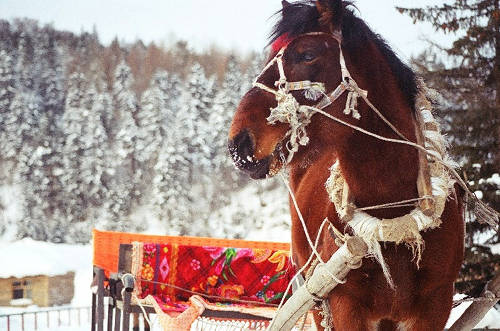Type the name of the breed you're looking for below
[wpdreams_ajaxsearchlite] Don't see the breed your're looking for? Click here and let us know!
Heihe horse
| Country Of Origin | China |
| History and Background | Along the boundary between China and the former Soviet Union there is a long river basin called Heilongjiang (Amur). Heihe city is the center of the Heihe horse breeding region. Beyond the forest/tundra to the north, the terrain is hilly with an altitude of 1,640 to 3,300 feet and a gradual slope. The area is rich in water resources. Average temperature is near 32F, with the minimum about -58F and the maximum in summer about 89F. Horses are absolutely necessary for both agriculture and transport in this area. The Heihe developed on the basis of Soulun and Mongolian stock. In the Longsha summary it was recorded that prior to the seventeenth century the Heihe area was occupied by the Soulun nation, which was connected to the Manchu. To enforce defense, the Qing government sent a large regiment of cavalry there that contained many Mongolian horses. After 1820, lumber and mining for gold again brought Mongolian stock to the area. In 1908, Russian immigrants brought horses of unknown origin, and after 1930 some Orlov Trotter and draft stock was added to the growing mixture. During the years from 1937 to 1939, a Russian strain of Mongolian was brought in and at the same time the Keshan stud farm was organised. Anglo-Norman stallions were mainly used and four insemination centers were established. By 1940, there were sixteen stallions at this stud farm, among them two Anglo-Arabians and four Anglo-Norman, and others were crosses from Anglo-Norman and Percheron. Systematic selective breeding was not done until 1955, when the North Horse Farm was founded. Finally, in 1963, the new breed was officially recognised. Thus the Heihe is a developed breed. |
| Use Today | Agriculture work, Cart horse, Riding horse |
| Height | 12.2 and 14 hands (50 and 56 inches, 127 and 142 cm) |
| Colour | Bay, Black, Chestnut, Grey |
| Characteristics | The head and neck of the Heihe breed are both medium in size and length. It is known for its big eyes and elongated ears, which are emphasized because of the medium-sized neck. Its forelegs are much more pronounced than its cannons. The hock, meanwhile, is usually bent and unpronounced. In addition, the withers of the Heihe are usually high and sloping downward to the croup, which is much lower. |
| Personality and Temperament | The Heihe breed’s nature is very compliant and yielding. It is usually employed for pack and draft work. It is relatively enduring, which makes it perfect for long and tiring travel. In Heihe, it is still used for farm work. |
| Other Considerations | Heihe is a place where the temperature is rather unpredictable. This has made the Heihe breed relatively adaptive to sudden shifts in temperature. The Heihe breed is enduring so it doesn’t require a lot of care and attention from its owner. Since the Heihe breed is well-adapted to variable climates, it can combat diseases well. Unless overtaxed and overworked, the Heihe breed will stay strong and healthy. |



